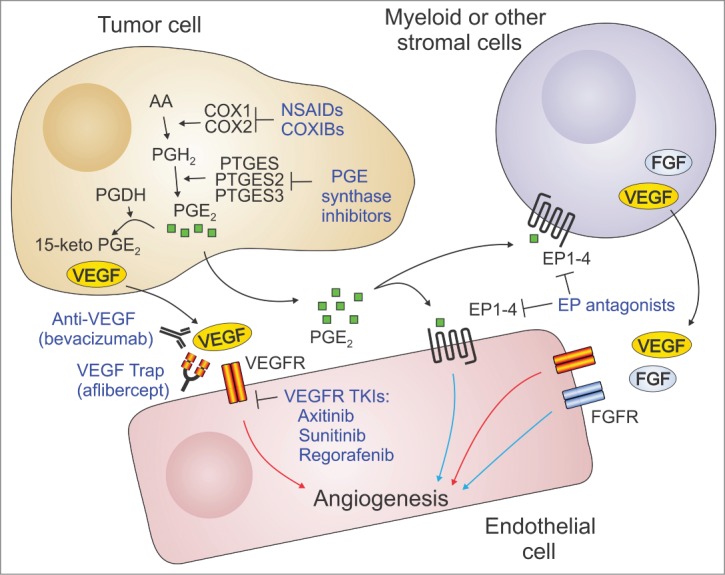Figure 1.

VEGF-dependent and -independent mechanisms of endothelial cell activation. Vascular endothelial growth factor A (VEGFA) produced by tumor cells can directly stimulate angiogenesis through the activation of VEGF receptors (VEGFRs) on endothelial cells. PGE2 produced by tumor cells can also activate angiogenesis through direct stimulation of the G-protein coupled receptors EP1 to EP4 on endothelial cells. PGE2 can also promote angiogenesis indirectly by recruiting proangiogenic myeloid cells and other inflammatory cells or fibroblasts to the tumors. These cells produce various angiogenic stimulators such as fibroblast growth factor (FGF) and VEGF. VEGF signaling can be blocked by anti-VEGF neutralizing antibodies (bevacizumab), soluble VEGF receptors (aflipercept), or several VEGFR tyrosine kinase inhibitors (TKIs). PGE2 signaling can be blocked through the use of NSAIDs, COXIBs, PGE synthase inhibitors, or EP receptor antagonists. Because of the independence of the pathways, the most effective inhibition of angiogenesis may result from simultaneous targeting of both the COX-2/PGE2 and VEGF pathways. Red arrows: VEGF-dependent angiogenesis; Blue arrows: VEGF-independent angiogenesis. AA: arachidonic acid; COX: cyclooxygenase; PG: prostaglandin; PGDH: 15-prostaglandin dehydrogenase; PTGES: prostaglandin E synthase.
